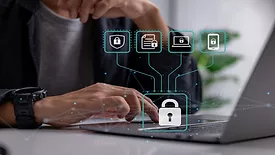Home » data breach
Articles Tagged with ''data breach''
Avoid costly cybersecurity turnovers during March Madness
Don't get too caught up in the excitement of March Madness. Boost security defenses by creating a cybersecurity game plan
March 15, 2022
Sign-up to receive top management & result-driven techniques in the industry.
Join over 20,000+ industry leaders who receive our premium content.
SIGN UP TODAY!Copyright ©2025. All Rights Reserved BNP Media.
Design, CMS, Hosting & Web Development :: ePublishing










